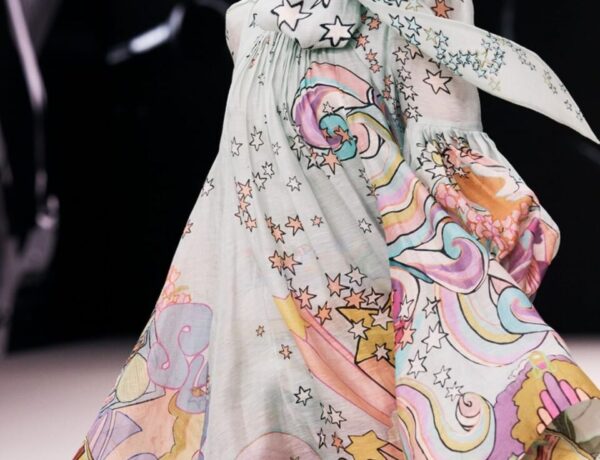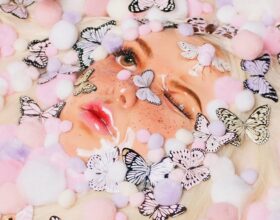Pull up a chair and sit down for a slice of cake. This isn’t just any cake though, this delicious treat is the Cat Charles special. What makes it so special? Well, the cake is made using a combination of eyeballs, fingers and plenty of blood all mixed into a delicious pastel pink frosting. While you’re sat down, why don’t you try the jam on toast? A delicious crimson jam oozes onto your knife, bloodshot eyes stare into you as you begin to lavishly spread the gory jam across your toast. If you’re feeling a bit more peckish then you can try out Cat’s delicious lunch menu complete with plenty of pills, sanatory products and 100 calorie diet snacks!
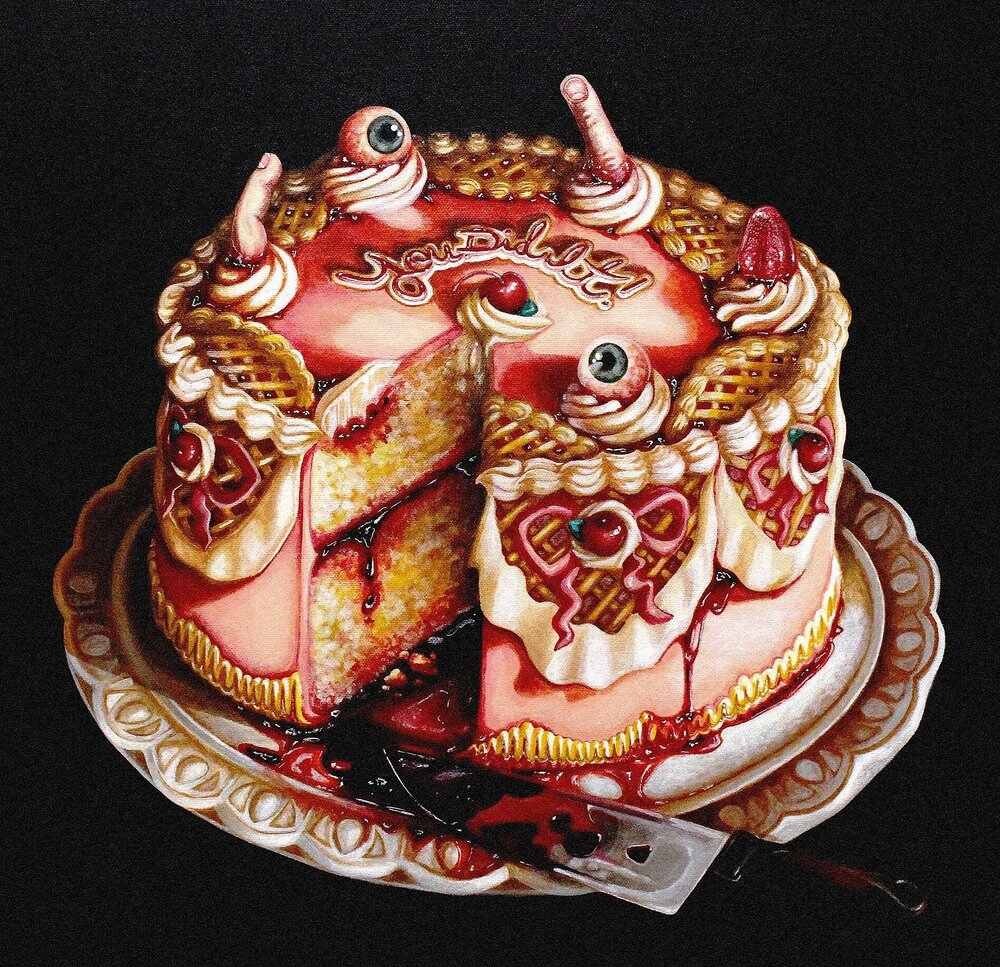

Cat Charles’ work oozes charm, along with oozing many other dubious substances. Her work explores the raw, uncensored version of femininity and all of the gruesome and gory details of what it means to be a women. Her food related acrylic paintings showcase the disturbing yet rather relatable reality of women while also exploring the creepy-cute genre that often comforts the disturbed and disturbs the comfortable.
Currently based in Los Angeles, Cat Charles is an artist and designer who specialises in UX/UI research and design, graphic design, illustration and fine art. Cat attended the Pace School of Performing Arts in New York City and is not only a visual artist but she is also a performing artist as she has grown up working in theatre and the entertainment industry. Her work in the performing arts has had a profound influence on her creepy cute visual artistry as “she strives to capture the complexities that come with the mental pressure of a beauty obsessed industry”.
I feel like my interest in this aesthetic is somewhat correlated to growing up as a girl. You’re expected to take on this role of sweetness and delicacy, but growing up as a girl is actually quite brutal. It’s gruesome.
Interview With Cat Charles
I’ve read online that you are an artist in many senses of the word, you are not only a visual artist but also have a background in the performing arts. I’d love to hear a bit about your interest and upbringing in the arts and how you first got into both visual and performing arts.
Absolutely! I was a shy, awkward child, and perpetually embarrassed of myself. I had a lot of difficulties articulating my words and emotions.
I feel like this is a universal experience for a lot of children who grow up to become artists, because it was easier to express myself with a pencil, rather than words. But I did have a yearning to be heard as well, so when I did my first play, I found it exhilarating to be able to be unapologetically loud and emotional. Studying acting and performing helped me to find my voice and feel worthy of others’ attention. I went on to study at The Pace School of Performing Arts, and I still act today. I realised that entertaining is sort of my love language.
Who are some of the artists who have inspired you and your work?
I actually remember my first introduction to lowbrow/pop-surrealism art. I grew up with pretty unrestricted internet access, and I thought Google was the most amazing thing ever. I would Google random images and click around for hours. There is this artist named Mia Mäkilä, and I found one of her paintings on Google one day.
Her work is beautifully unsettling. I remember not being able to look away. I had to be 11 or 12, and I didn’t know that work like that was allowed. I thought it was so powerful that an artist could create things that are disturbing and beautiful at the same time. I still have her website bookmarked to this day. With that, I am also a fan of the classics. I love the strong contrast of the work of Caravaggio, and the chaotic beauty of Hieronymus Bosch’s paintings.
I’ve seen that you use acrylic for your traditional paintings on canvas and wooden slabs, what is it about acrylic that works so well for you?
To be honest, my love for acrylic came out of convenience. I dabbled with painting a bit when I had free time in college, and acrylic was simply more accessible to me, since painting was just a hobby. However, once the pandemic rolled around and there was no more work, I began painting more seriously. I needed that creative outlet, and since I was hopping around from couch to couch, for a time, acrylic was easier to transport and clean up. I’ve stuck with it because I love the challenge of blending acrylic. I feel like it has made me a better artist. I also have to admit, I am incredibly inpatient, so acrylic suits me in that way.

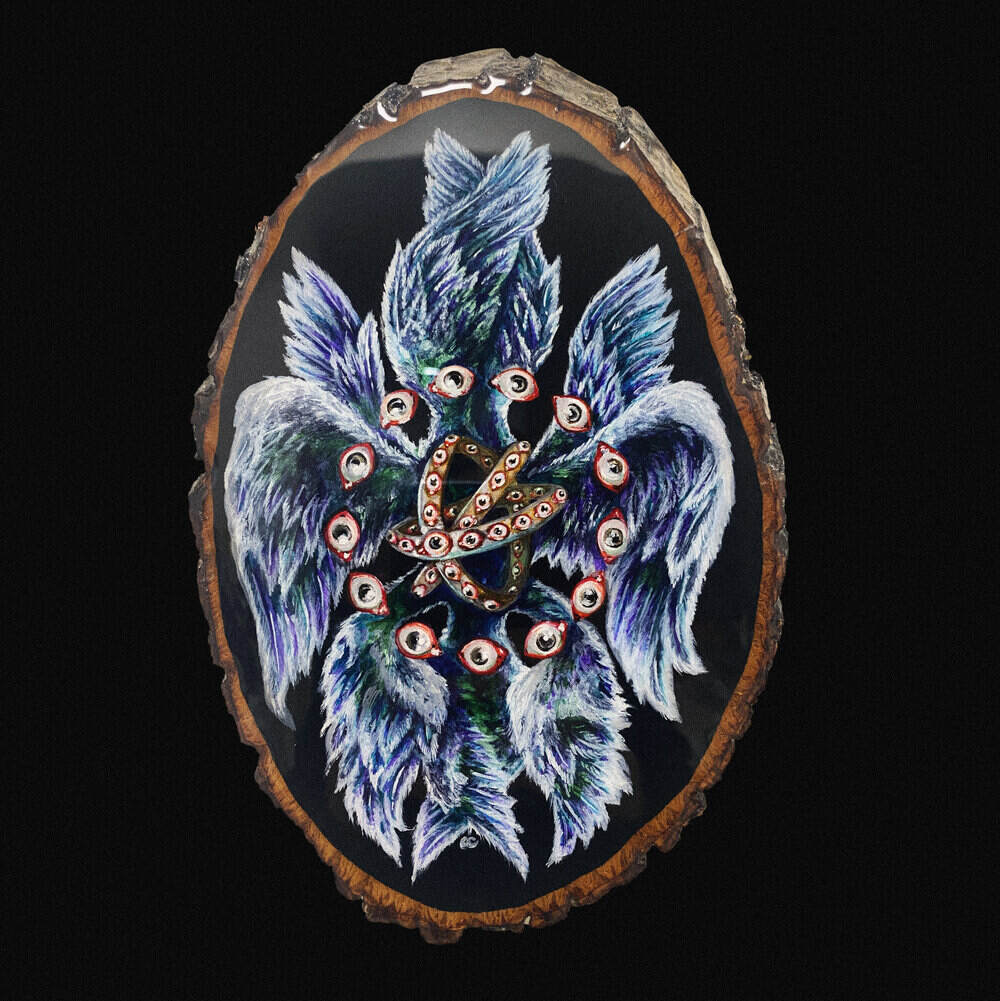
You also do digital illustration alongside traditional painting. What attracts you to work in both areas as opposed to picking just one? And do you have a favourite which you find you gravitate more towards?
Digital art has been such a godsend for me. I move around a lot and sometimes I can’t bring my supplies with me, so working digitally has always been a great option. It’s nice knowing that I have the option to create on the go. It is such an amazing privilege. I am also able to try new techniques/styles before committing to a canvas. I will say that I do prefer painting traditionally.
The convenience of digital is great, and I can correct my mistakes so easily. But with traditional painting, I can completely tune out. I don’t have the urge to check up on social media or click on notifications. I can be totally present in the physical world. There’s also something special about making something physically tangible. Maybe it’s just my anxiety, but I don’t have to worry about my acrylic painting disappearing from a software crash. I don’t have to click save.
Your artwork is incredibly striking in terms of how you utilizes both creepy and cute aesthetics. Is the creepy-cute style something you have always been interested in?
Absolutely. I’m so drawn to that contrast. I think it is so interesting and also challenging. When you throw in all of these polar components, you never know what types of reactions you will receive. Sometimes I don’t even know how I’ll react to my own work once it’s done. I feel like my interest in this aesthetic is somewhat correlated to growing up as a girl. You’re expected to take on this role of sweetness and delicacy, but growing up as a girl is actually quite brutal. It’s gruesome.
I read that you “strive to capture the complexities that come with the mental pressure of a beauty obsessed industry.” I’m interested to hear more of your opinion on this topic and how it has influenced your artwork.
Working in entertainment is definitely a strong influencer for my work. I’ve always struggled with self-image, as so many of us do, but when you are in front of a camera or on a stage, those struggles are magnified. I am currently 26 and still get asked to play a 16 year old. Then the next day I’ll be auditioning to play a 35 year old.
When the expectations of women surrounding youth and beauty are already so asinine, this can feel even more confusing. It’s as if I no longer have any idea what I look like, and sometimes it feels like what I look like is 90% of the job. Acting is such a beautiful and amazing craft, but the industry surrounding it can be absolutely disgusting at times. It’s like cutting into a beautiful cake to find it filled with blood.

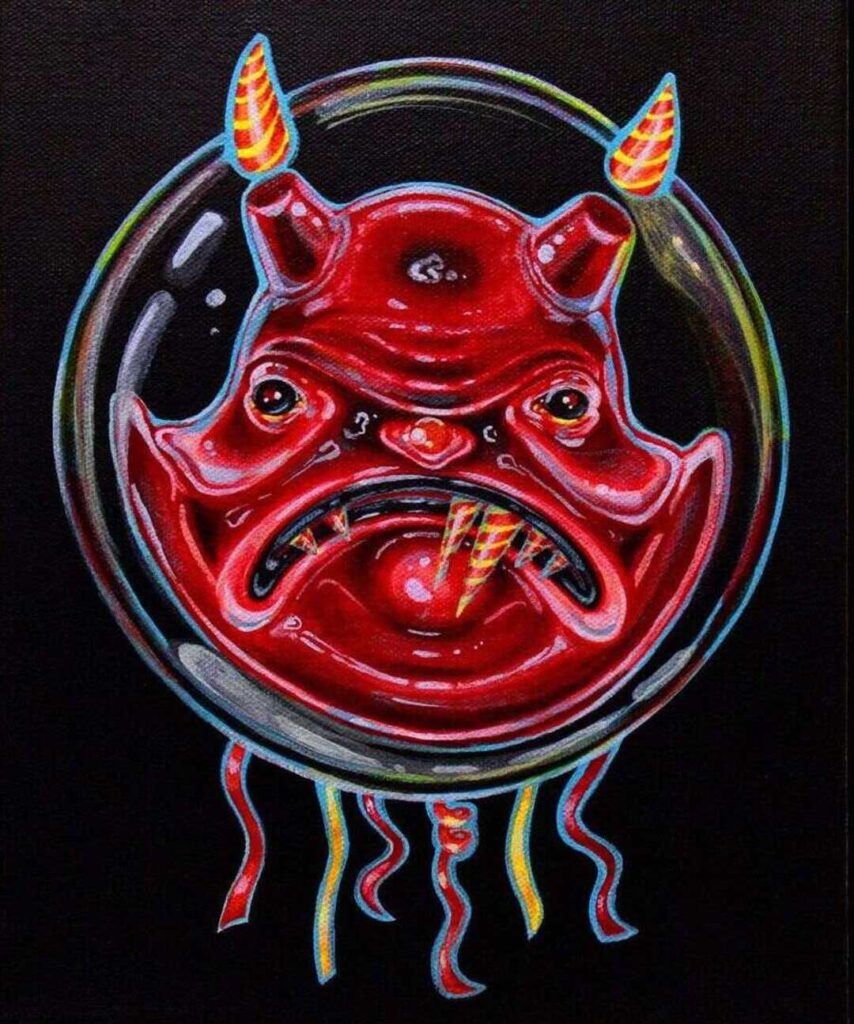
Ironically, I hope that people can find comfort in my work. It sounds strange, being that many people consider my work highly disturbing, but I want to share that, yes, beautiful things can be disgusting. And disgusting things can be beautiful.
Would you say the visual and performing arts are interconnected or are they more separate worlds?
I’ve argued with myself about this many times, because painting feels so much more personal and forgiving at times. But when you take out the industry of it all, I feel like there has to be some sort of connection between the two. At the end of the day, they are both methods of communication in my eyes.
There is something so human about these things. Whether it be performance or visual, there’s always a message. Sometimes the message is clear, but sometimes you have to search for it. And sometimes the message is interpreted differently for everyone in a totally unintentional way, and that’s okay. I feel like we do these things to reach each other, whether we are aware of it or not.
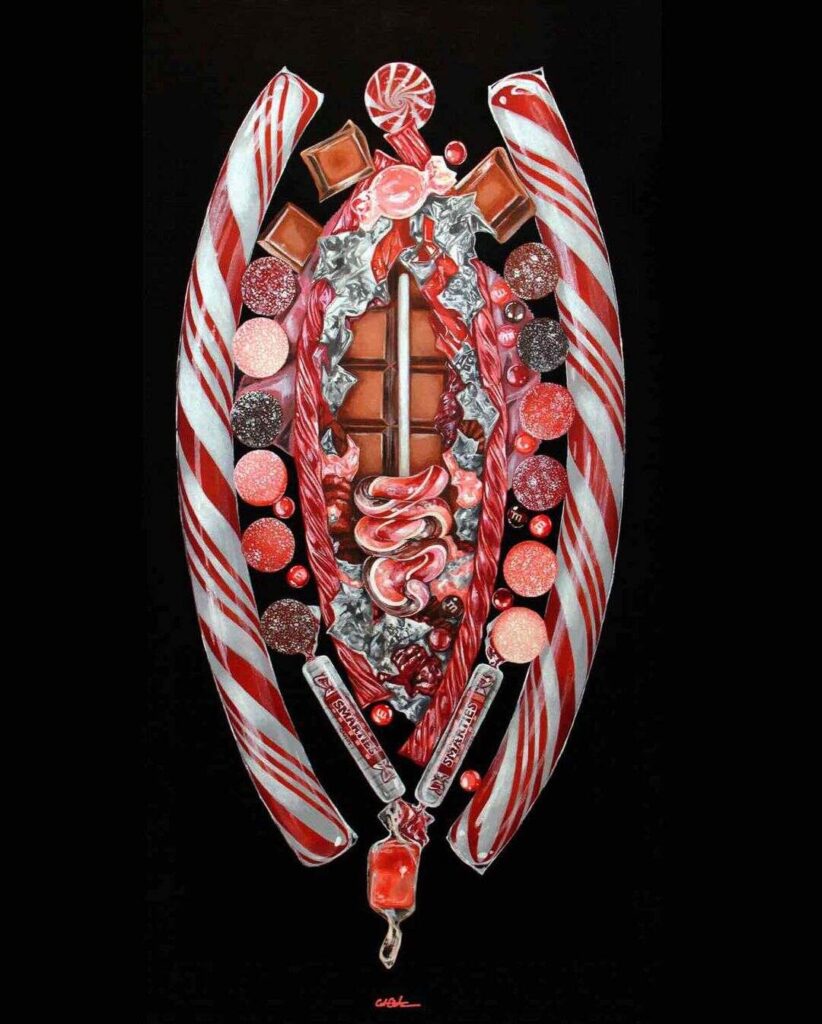
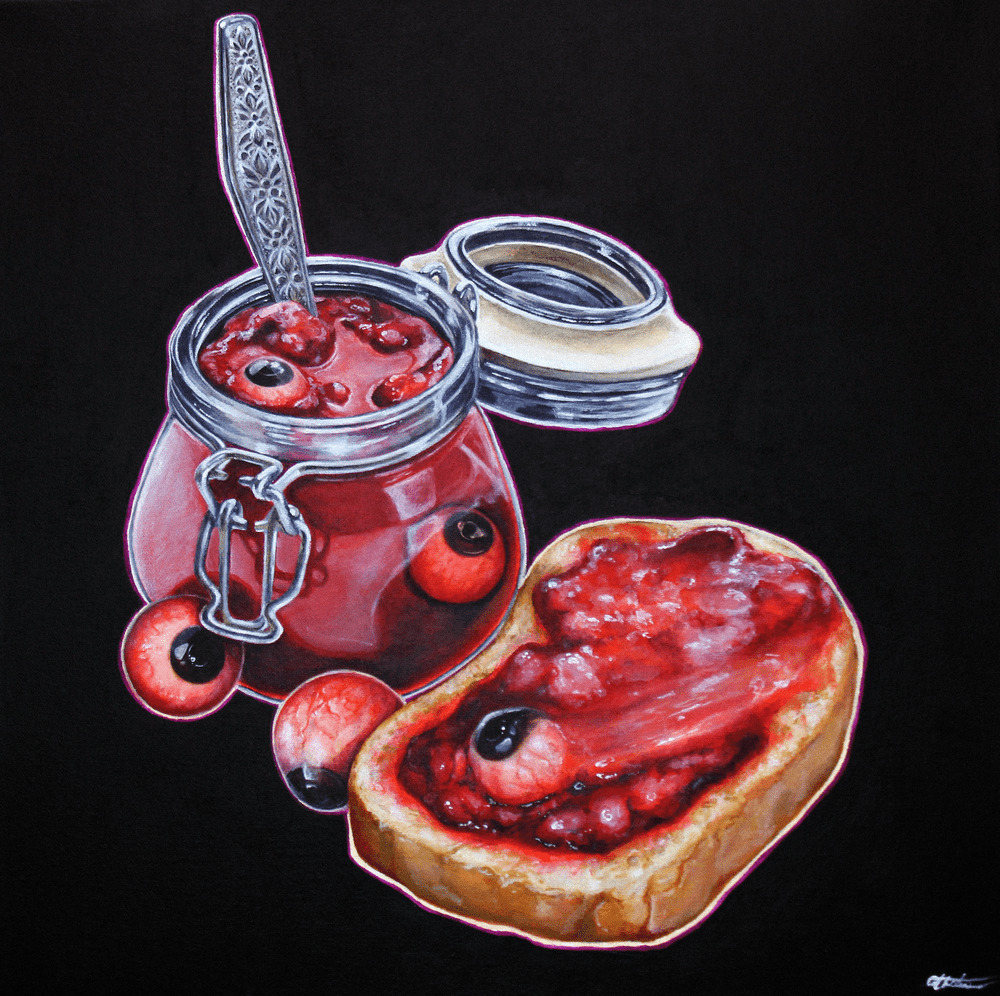
Some of my favourite paintings of yours include You Did It! and Jam which incorporate eyes and blood into desserts. What was the inspiration behind these paintings?
Thank you so much! Eyes are so fascinating to me. Sometimes if I think about them for too long, it starts to freak me out, because I personally have no idea how they really work. But I do know that looking someone (or something) in the eyes creates this level of consciousness and connection that is unparalleled. They say so much with so little. That’s why I like to incorporate them into my work. Not to personify these desserts I paint, but to force people to “look at my work in the eyes”.
I tend to further corporate more gore and the sort to push for that contrast of beautiful and disturbing. There is a salad of inspiration behind these paintings, but I actually think a lot of it has to do with the feminine experience. The cruelty of growing up as a girl, the demonization of food, the sickly disguise of beauty; it all finds its way into my work.
What has been your favourite painting you have made to date and why?
You Did It! has gradually grown into one of my favorite pieces, because I feel like there’s a narrative to it. Who did what? I’m not quite sure. But it must’ve been pretty bad. Or good? It’s really up to the viewer. I like to give that option. I actually used to dislike that painting quite a bit until I actually showed it to others, and to my surprise, they understood it. It feels good to be understood, even though I might not even make sense to myself at times.
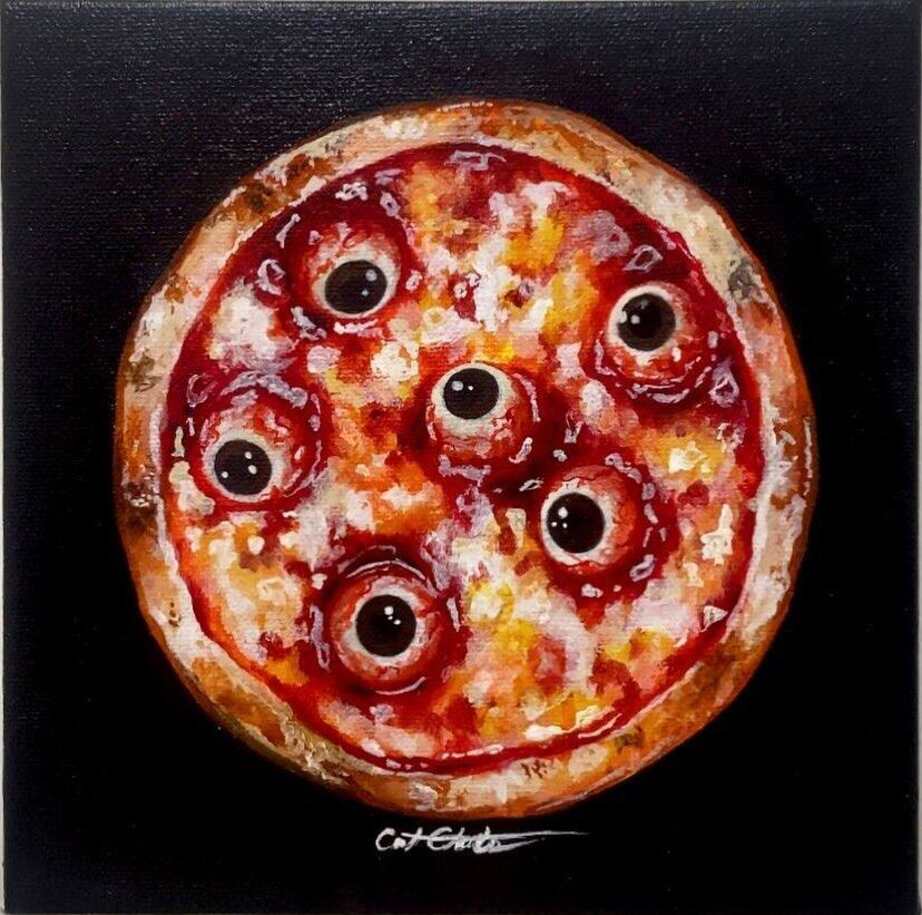
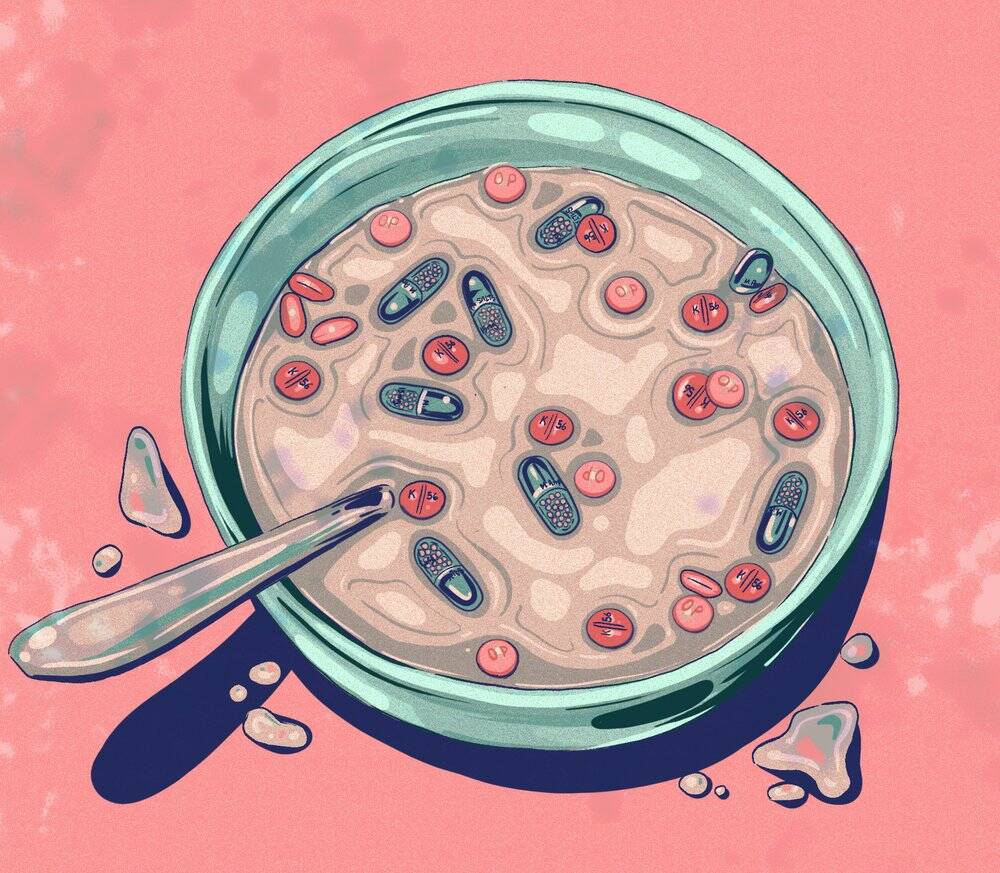
What has been your most challenging painting to date and why?
Free Candy has absolutely been one of my most challenging pieces. It’s actually one of my few paintings that doesn’t incorporate gore. It’s essentially a pile of candy that is representative of a vulva. I feel it was challenging not only because of the level of detail I pushed for, but also the emotional aspect of it.
It’s a bit different from my other pieces, which is of course challenging as well, but I found myself cycling through many varying emotions while painting it. Anger, then sadness, love, and then fury. You know when you leave a bowl of candy in a room with a child, and then tell them not to eat it? But as soon as nobody is watching, the child will eat the candy? Some children never grow out of that. Or rather society teaches them not to. And suddenly they are adults, but instead of candy, it’s women’s bodies. That’s what I was thinking about.
What do you hope people can take away from viewing your work? Are there any specific messages or emotions you hope people can feel upon viewing your work?
Ironically, I hope that people can find comfort in my work. It sounds strange, being that many people consider my work highly disturbing, but I want to share that, yes, beautiful things can be disgusting. And disgusting things can be beautiful. And nothing is ever one or the other.
When you’re not working on a new piece of artwork, what do you like to get up to?
I love to create in any other way I can. I recently joined a theatre company and they are absolutely amazing. They are so welcoming and I love putting up shows with them. Additionally, I’ve taken up photography and have spent a lot of time exploring that. I also am a runner and love to zone out and find inspiration on a nice run. I create a lot of my best work after a good run.
What’s next for you as an artist? Any exciting plans for 2023?
Right now, I will be attending The Other Art Fair in Los Angeles Spring 2023. It will be my second time exhibiting with TOAF and I’m highly looking forward to it!


